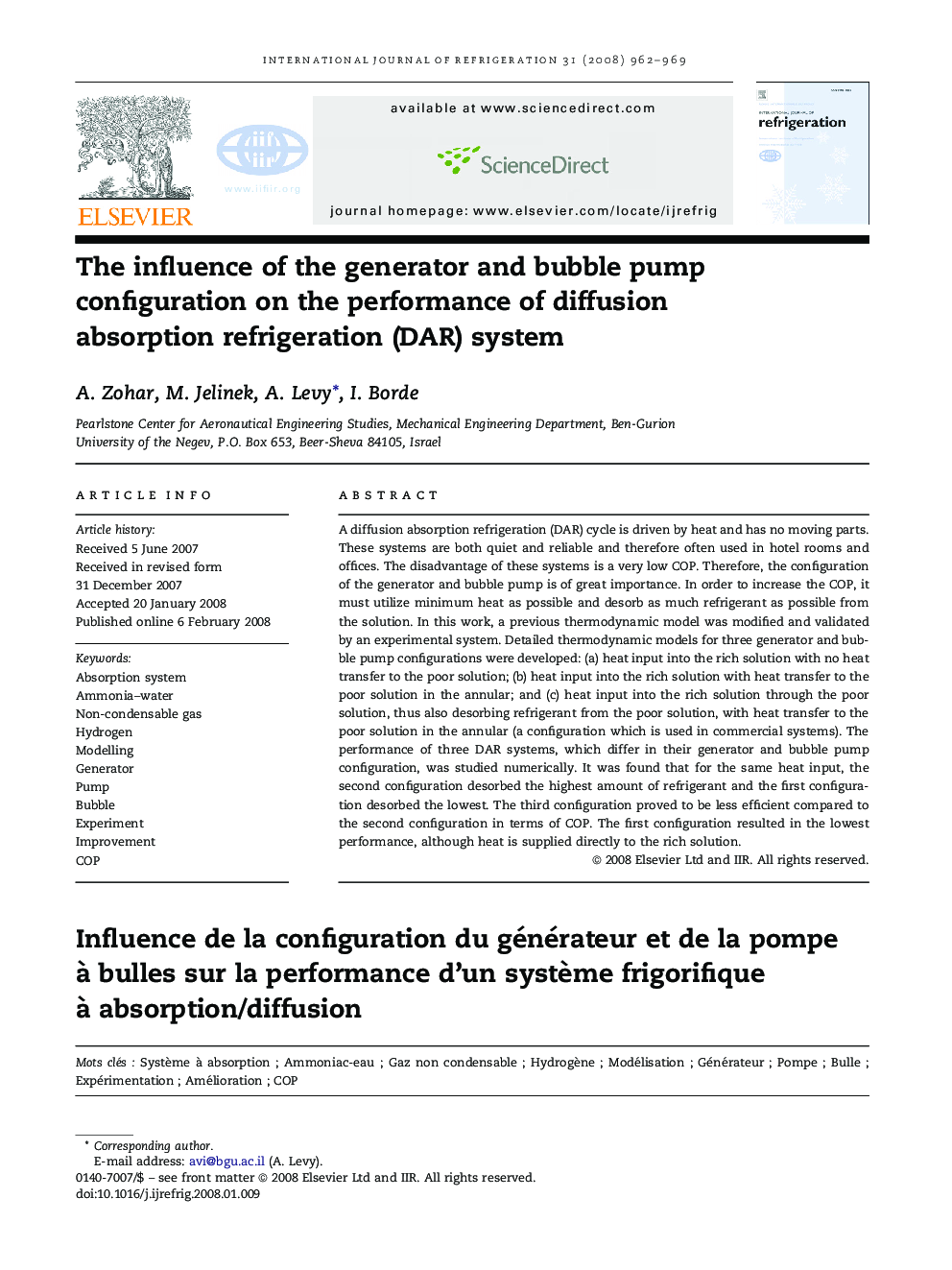| Article ID | Journal | Published Year | Pages | File Type |
|---|---|---|---|---|
| 789922 | International Journal of Refrigeration | 2008 | 8 Pages |
A diffusion absorption refrigeration (DAR) cycle is driven by heat and has no moving parts. These systems are both quiet and reliable and therefore often used in hotel rooms and offices. The disadvantage of these systems is a very low COP. Therefore, the configuration of the generator and bubble pump is of great importance. In order to increase the COP, it must utilize minimum heat as possible and desorb as much refrigerant as possible from the solution. In this work, a previous thermodynamic model was modified and validated by an experimental system. Detailed thermodynamic models for three generator and bubble pump configurations were developed: (a) heat input into the rich solution with no heat transfer to the poor solution; (b) heat input into the rich solution with heat transfer to the poor solution in the annular; and (c) heat input into the rich solution through the poor solution, thus also desorbing refrigerant from the poor solution, with heat transfer to the poor solution in the annular (a configuration which is used in commercial systems). The performance of three DAR systems, which differ in their generator and bubble pump configuration, was studied numerically. It was found that for the same heat input, the second configuration desorbed the highest amount of refrigerant and the first configuration desorbed the lowest. The third configuration proved to be less efficient compared to the second configuration in terms of COP. The first configuration resulted in the lowest performance, although heat is supplied directly to the rich solution.
